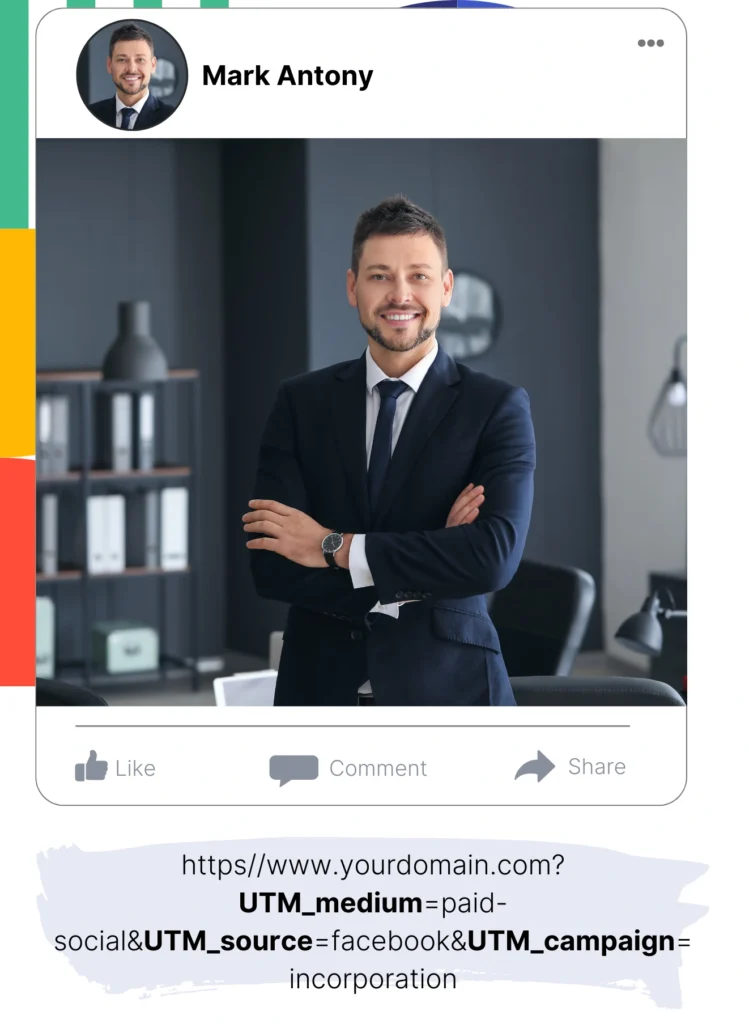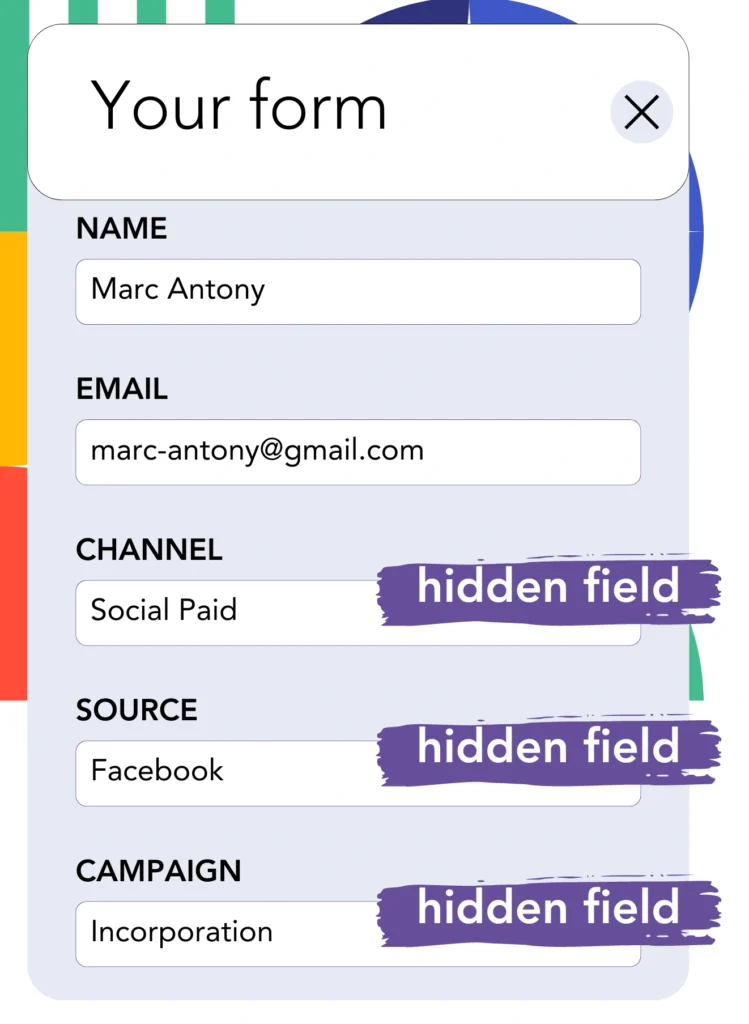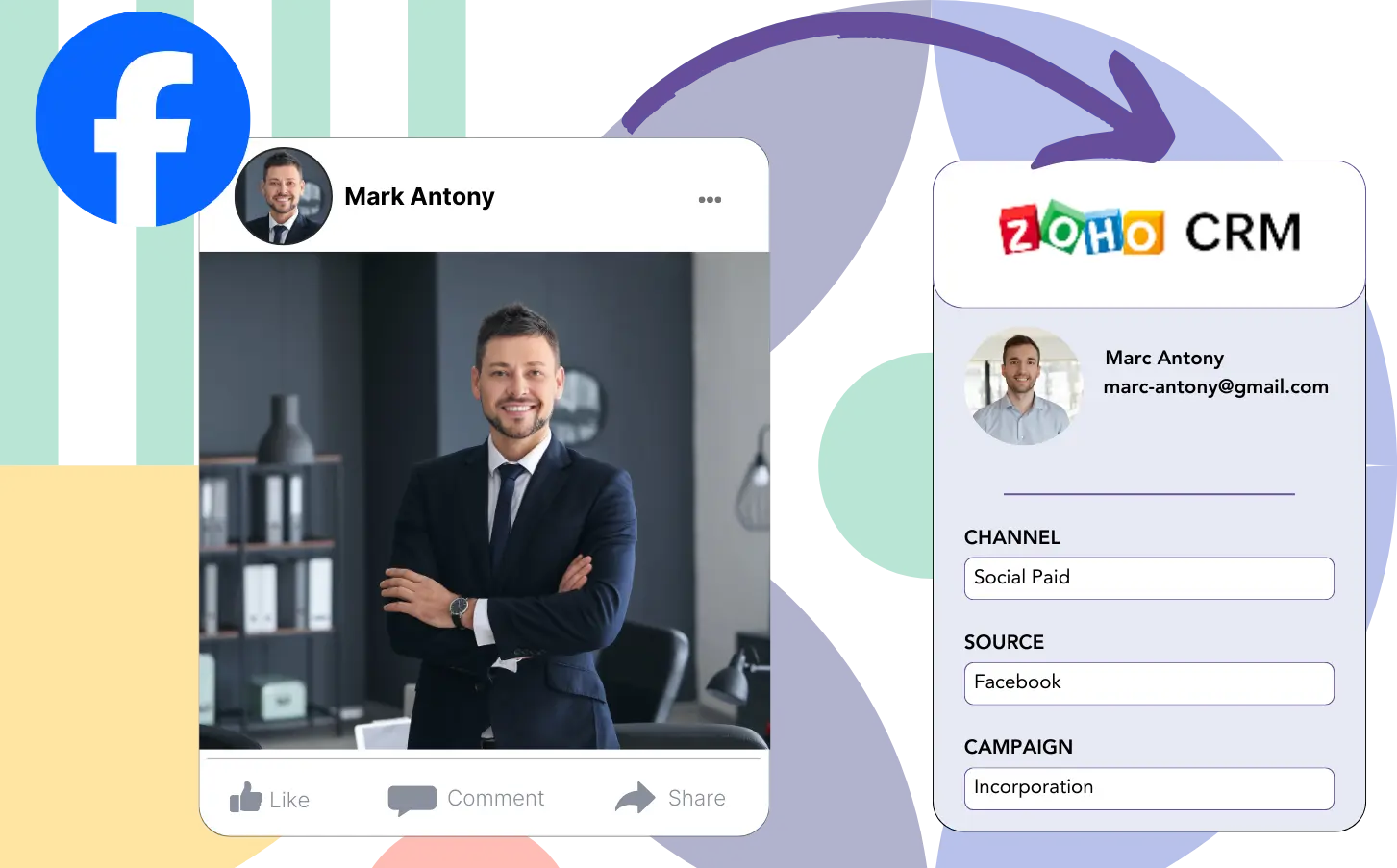You run lead gen ads on Facebook and send your leads to Zoho CRM. But you don’t know which Facebook ad generated each lead. So when you convert a lead into a customer, you don’t know which ad generated the sale.
This lack of data prevents you from optimizing your Facebook ads. You spend on several ads simultaneously but don’t know which ad brings the revenue.
Leadsource solves this problem by connecting each lead to its Facebook ad (campaign, ad set, audience, ad).
In this article, you will learn how to attribute each lead to a specific Facebook ad, campaign, ad set, and audience.
Let’s dive into this!
Capture Facebook ads in Zoho CRM
Step 1: Add Leadsources in the head tag of your website

Sign up to Leadsources.io, and benefit from our 14-day free trial.
Add the Leadsources tracking code in the head tag of your site – follow this easy step-by-step guide.
Step 2: Add the UTM parameters to your Facebook ads campaigns

Insert the UTM parameters you want to track into your Facebook campaigns.
Example: You can track the campaign, ad set, audience, and ad by using the following UTM parameters:
- UTM_source=facebook
- UTM_campaign=campaign-name
- UTM_term=ad-set-name
- UTM_content=ad-name
Leadsources captures all lead source data, including channel, landing page, and landing page subfolder, even when UTM parameters are absent, providing complete insight at the lead level.
Step 3: Add the hidden fields in your form

For Leadsources to store the lead source data, you need to create hidden fields in the form on your landing page.
So when a new lead submits your form, Leadsources automatically adds the Facebook ads data into the hidden fields.
Refer to our detailed guide to add hidden fields to your form to complete the setup.
Step 4: Capture the Facebook ads data in Zoho CRM

Upon clicking your Facebook ads and landing on your page, Leadsources captures the Facebook ads data (campaign, ad, ad set, audience).
The hidden fields of your form are automatically populated with Facebook ads data by Leadsources.
Upon form submission, the Facebook ads data (alongside your leads) can be passed automatically to Zoho CRM. To do so, simply connect your form to Zoho CRM.
How does Leadsources work?
When you add the Leadsources tracking code to the head tag of your site, it collects Facebook ads data, including campaign, ad set, audience, and ad, every time a visitor lands on your site.
Once captured, the Facebook ads data is stored in the hidden fields of your form. This data can then be passed to your Zoho CRM, alongside the lead.
Leadsources collects the following data from visitors:
- Channel
- Source
- Campaign
- Content
- Term
- Landing page
- Landing page subfolder
Leadsources tracks these lead source data even if UTM parameters are not used.
In some cases, you cannot use UTM parameters:
- Google Search
- Instagram bio link
- Social media posts
- Etc.
For most of the lead source tracking tools, this is a problem, because they only rely on UTM parameters to provide lead source data. But Leadsources keeps tracking some of the lead source data even when UTM parameters can’t be used:
- Channel
- Source
- Landing page
- Landing page subfolder
Therefore, unlike other tools, Leadsources provides lead data tracking across all channels:
- Organic Search
- Paid Search
- Organic Social
- Paid Social
- Referral
- Affiliate
- Display Advertising
- Direct Traffic
Leadsources categorizes your traffic by channel automatically, providing a clean dataset as a result.
With Leadsources, you build robust lead source tracking across all channels, into a central place.
How to run performance reports
Now that you track Facebook ads data into Zoho CRM, you can create several performance reports, such as:
- Leads by channel
- Leads by campaign
- Leads by ad set
- Leads by audience
- Leads by ad
- Leads by landing page
- Leads by landing page subfolder
This helps you evaluate and adjust your Facebook ads budget more accurately.
Let’s go through the different types of reports you can make.
Lead performance reports
These reports help show the volume of leads generated by:
- Channel
- Campaign
- Ad set
- Audience
- Ad
- Landing page
- Landing page subfolder
Example #1
Export data from various channels (SEO, PPC, email, etc.) to create a report called “Leads by Channel.”

Example #2
After establishing which channel performs best (E.G. Facebook ads), you can focus on it to view the number of leads from every campaign.

Example #3
When you determine the top lead-generating campaign, you can see which particular audience, ad set, or ad is responsible for these leads.

Sales performance report
Discovering which ads and keywords bring in the most leads is helpful, but do they also drive your revenue?
Sending your form data to Zoho CRM facilitates the generation of detailed sales performance reports.
Example:
| Channels | Search Paid | Social Paid |
| Leads | 50 | 75 |
| Sales | 5 | 6 |
| Average order value | $150 | $100 |
| Revenue | $750 | $600 |
After analyzing the performance of your Google and Facebook ads, you discovered that Social Paid ads resulted in more leads than Search Paid ads.
Following a few weeks of analysis, you observe that the Search Paid channel generated more revenue with fewer leads than the Social Paid channel, which influences your choice to increase the budget for Search Paid campaigns.
LeadSources tracks the source of each lead in Zoho CRM, whether they come from ads, organic search, social, email, etc. and syncs that data with each submission. See the full breakdown on the lead source in Zoho CRM page.

